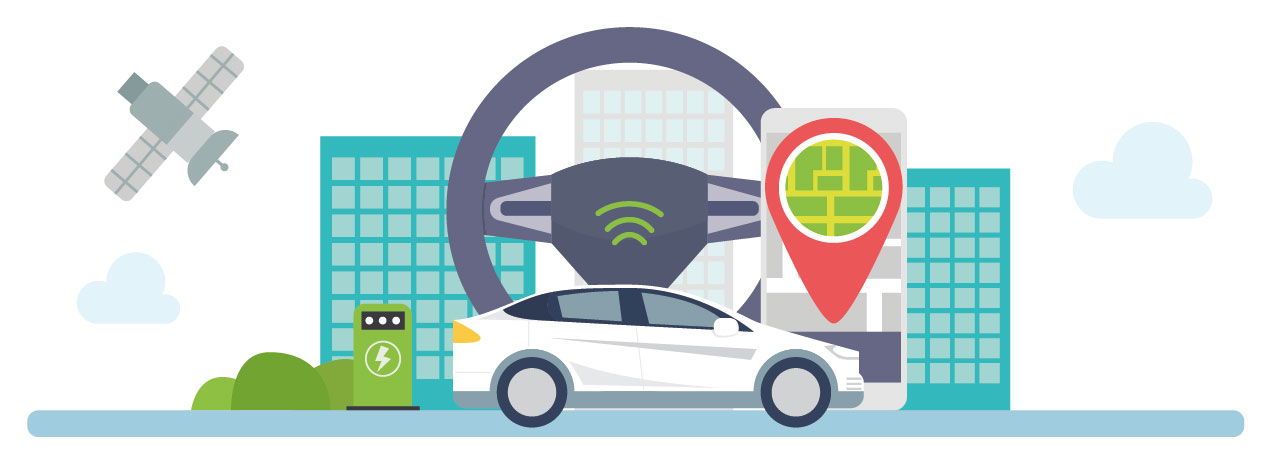Electric vehicles are becoming more common worldwide and utilities are ready to involve them in their business models. However, incorporating electric vehicles is not as simple as it seems. Utility companies must identify the main challenges and mitigate the risks of adoption. All of this, while maximizing associated benefits and seizing emerging opportunities before EV adoption truly takes off.
 The electrification of the transportation system and the deployment of electric vehicle charging infrastructure will increase as customers become more conscious of the environment and declining EV battery prices. Bloomberg New Energy Finance estimates that 57% of new U.S. passenger vehicle sales and 56% of new light commercial vehicle sales will be electric by 2040(1). Many utility companies are beginning to realize the significance of electric vehicles and, therefore, are preparing to adopt these new business models that are changing industry.
The electrification of the transportation system and the deployment of electric vehicle charging infrastructure will increase as customers become more conscious of the environment and declining EV battery prices. Bloomberg New Energy Finance estimates that 57% of new U.S. passenger vehicle sales and 56% of new light commercial vehicle sales will be electric by 2040(1). Many utility companies are beginning to realize the significance of electric vehicles and, therefore, are preparing to adopt these new business models that are changing industry.
To keep up with the new opportunities that arise from electric vehicles, utilities should particularly overcome two main challenges: minimizing the potential grid impacts and improving customer experience. To handle these tasks, utilities can take advantage of 1) load control initiatives, 2) EVs as a distributed energy resource (DER), and 3) their deep understanding of customer needs, preferences, and usage behaviors.
Grid impact seems to be a significant concern with the evolving electric vehicle market. Navigant estimates approximately 1.2 million charging ports exist in North America as of 2018 and will grow to over 12.6 million by 2027(2). The future will bring an increasing number of public, corridor, fleet, and private charging sites of multi megawatt scale, which will require more in-depth planning effort. Utilities can manage EV charging by creating behavioral load control that relies on customer behavior to affect charging patterns or carry out direct load control via the charging device, diminishing a significant impact on the grid(3). Utilities could use EV as a DER with the ability to dispatch energy back into the grid, which is better known as vehicle to grid (V2G).
Nevertheless, utility companies do not have to deal with the EV charging requirements alone. Utilities, manufacturers, regulators, among other stakeholders, are working together to solve EV-related issues, such as range anxiety, standard operating practices, network communications interfaces and, equipment capabilities, to get electric vehicles in motion.
Utilities are facing a digitalization era thanks to newly developed technologies that are changing customer experience. In the case of electric vehicles, utility companies must engage customers by exploring low-cost strategies, such as EV information on utility websites to educate consumers. There are also more expensive tactics that businesses can consider, such as offering rewards, rebates, special rates, or smartphone functionality for control and management of EV charging.
With this in mind, utilities must prepare to meet both electricity demand and customer expectations in terms of costs, service reliability, environmental impact, and customer experience. As EV charging infrastructure grows, utilities should continue to identify the challenges and opportunities to reduce pain points and provide best-in-class customer service to drive the rapid adoption of EVs.
(1) Bloomberg New Energy Finance, 2019. Electric Vehicle Outlook 2019. https://about.bnef.com/electric-vehicle-outlook/.
(2) Navigant, 2Q 2018, EV Charging Equipment Market Overview.
(3) SEPA, 2019, A Comprehensive Guide to Electric Vehicle Managed Charging.




